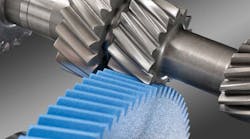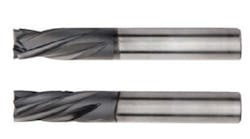Swagelok Company (www.swagelok.com) has developed a new form of stainless steel that the company says maintains its hardness and corrosion resistance at the same time.
The company has formed a new, wholly owned subsidiary to market and commercialize its Low-Temperature Colossal Supersaturation (LTCSS) heat treating process. The process heat-treating austenitic stainless steels that enables large-scale carbon absorption into austenitic stainless steels, and dramatically improves their hardness and other performance characteristics.
The new company will be headquartered in Cleveland. Its name will be announced as part of the company’s business and marketing plan.
Materials scientists have seen that carbon atoms cannot be introduced into austenitic stainless steel through heat treatment without the formation of chromium carbides, which compromise the corrosion resistant properties of the alloy. Hardness and corrosion resistance are typically regarded as tradeoffs.
Swagelok says its LTCSS process introduces carbon atoms into an austenitic crystal structure without the formation of chromium carbides — in fact, carbon absorption is about 80,000 greater than thermodynamics and kinetics would suggest would be possible. Changes occur at the surface of the stainless steel component being treated, not all the way through to the core. As a result, the surface hardness of austenitic stainless steels treated with the LTCSS process increases by about three to four times. At the same time, the company says there is evidence of improved corrosion resistance; wear resistance increases by 100 times; erosion resistance increases by 5.5 times; and fatigue strength increases by approximately 50 percent. The improved characteristics give stainless steels performance characteristics similar to alloys such as Hastelloy or titanium.
The weldability of LTCSS-processed materials is currently under study. The process may be performed on finished components without distortion or change of dimension, including components with complex shapes and structures, and no compromise of ductility. These outcomes have been verified by research at Case Western Reserve University, Oak Ridge National Laboratory, the U.S. Naval Research Laboratory, and Northwestern University. Possible applications could include uses in the automotive, medical, aerospace and defense, oil and gas, and pulp and paper industries.
“Arguably, this is one of the most significant breakthroughs in materials science in many decades, as well as one with many extraordinary technological implications,” said Arthur Heuer, Ph.D., University Professor and Kyocera Professor of Materials Science and Engineering at Case Western Reserve University. Heuer’s work was been instrumental in verifying the characteristics of LTCSS.
John Buda, formerly Swagelok’s manager for strategic accounts, has been named president of the new company that will be responsible for developing the LTCSS business. Dr. Sunniva Collins, a research metallurgist who has been involved with LTCSS since its inception at Swagelok and who will serve the new company as technical director, will report to Buda.
Swagelok received the distinguished ASM International Engineering Materials Achievement Award for the LTCSS process in October 2006.



